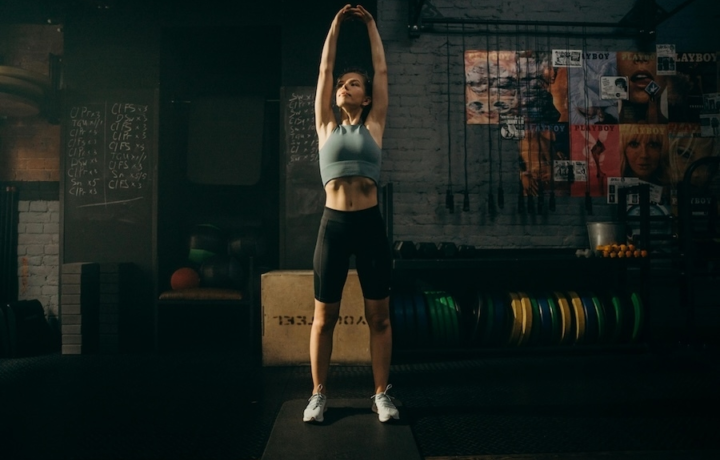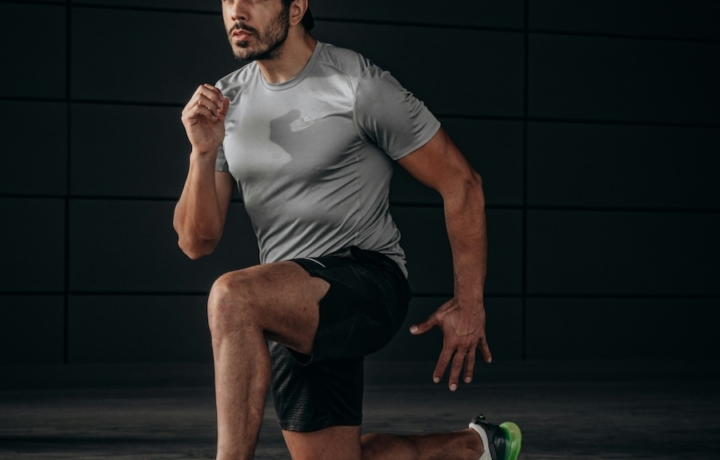Exercise
Child's Pose

Child's Pose
How to Perform
- Kneel on the floor with your big toes touching and knees spread about hip-width apart or wider depending on your comfort level.
- Exhale and lower your torso between your thighs, bringing your forehead to the floor.
- Extend your arms forward with palms facing down, creating a straight line from your shoulders through your fingertips.
- Relax your shoulders away from your ears and allow them to roll forward, creating space between your shoulder blades.
- Press your sitting bones back toward your heels while keeping your arms active to maintain the stretch through your spine.
- Focus on breathing deeply into your back, feeling your ribcage expand with each inhale and release tension with each exhale.
- Keep your neck in a neutral position with your gaze directed toward the floor, avoiding any straining or tensing in your neck muscles.
- Hold the pose for 30 seconds to several minutes, continuing to breathe deeply and allowing your body to sink deeper into the stretch with each exhale.
Important information
- If your thighs don't rest comfortably on your calves, place a folded blanket between them for support.
- For tight shoulders, try placing your arms alongside your body with palms facing up instead of extended forward.
- Keep your forehead resting on the floor or mat – if this is uncomfortable, place a cushion or folded towel under your forehead.
- If you experience knee discomfort, widen your knees further apart or place a rolled towel behind your knee joints.

Child's Pose
Exercise Details
Primary Muscles
Muscle Groups
Mechanic
Built for progress
Take the guesswork out of training
Create personalized AI-powered workout plans that evolve with you. Train smarter, track every rep and keep moving forward, one workout at a time.






Child's Pose, often referred to as the resting pose in yoga practice, offers an accessible entry point for beginners while providing profound benefits for more advanced fitness enthusiasts. This gentle position primarily targets the erector spinae: those important muscles running along your spine, while also providing a mild release for the glutes, making it perfect for anyone experiencing tightness in the lower back region. What makes Child's Pose particularly valuable is its versatility within a fitness routine. As a recovery position, it allows the body to reset between more challenging exercises, bringing the heart rate down while maintaining engagement. During cool-down sequences, it helps transition the body from an active state to rest, signaling to your nervous system that the intense work is complete.
Alternatively, incorporating it into your warm-up routine gently awakens the spine and prepares the back muscles for more demanding movements ahead. The pose primarily functions as a stretching exercise, creating gentle elongation through the entire posterior chain from the ankles to the neck. This stretching quality makes it exceptional for releasing tension that accumulates throughout the day, especially for those who spend hours sitting at desks. Beyond simple stretching, Child's Pose enhances mobility by encouraging the natural articulation of the spine and promoting healthy range of motion in the hips.
Perhaps what's most remarkable about Child's Pose is its dual nature: simultaneously calming the mind while physically preparing the body. The position naturally encourages deeper breathing patterns, which activates the parasympathetic nervous system. This physiological response helps reduce cortisol levels and creates a moment of mindfulness even within a physically-focused training session. For athletes dealing with recovery from more intense workouts, this meditative quality offers both mental and physical restoration.
FAQ - Child's Pose
Child's Pose primarily targets the erector spinae muscles along your spine while providing a gentle release for the glutes and stretching the entire posterior chain from ankles to neck. It also creates space between vertebrae, relieving compression in the lower back.
If you have knee issues, place a folded blanket between your calves and hamstrings to reduce pressure on the knee joint. Alternatively, try a Wide-Knee Child's Pose to decrease direct pressure on the knees while maintaining the back-stretching benefits.
For recovery between exercises, hold for 30-60 seconds while focusing on deep breathing. When using it for dedicated stretching or stress relief, you can extend the hold to 2-5 minutes, allowing time for the muscles to fully release and the nervous system to calm.
Avoid lifting your buttocks too high off your heels, which reduces the stretch in your back. Don't collapse your chest toward the floor; instead, actively reach forward with your fingertips to create length in the spine. Remember to breathe deeply rather than holding your breath.
Extend the arms further forward or slightly elevate your hands on blocks to increase the stretch. Try the "active" version by pressing your palms firmly into the mat while drawing your hips back toward your heels. For targeted relief, position a foam roller or tennis ball under tight areas of your back.








